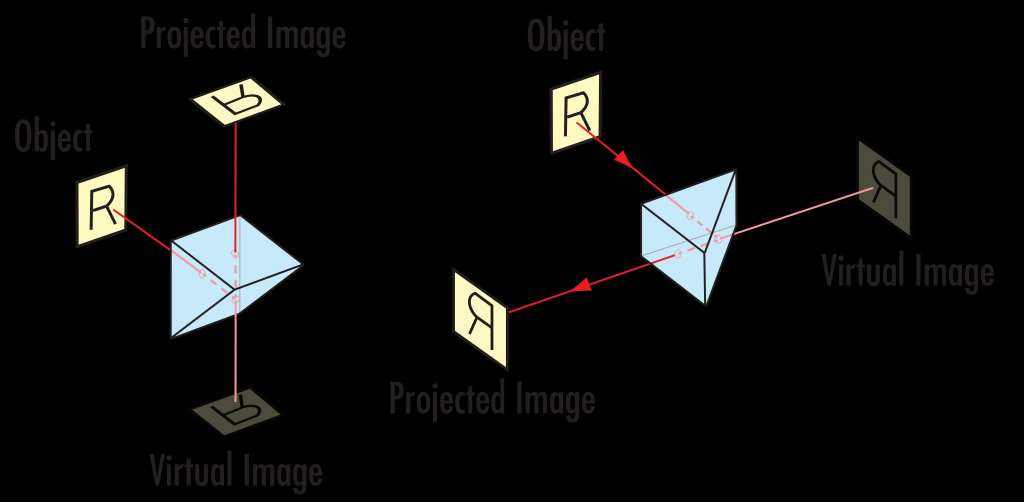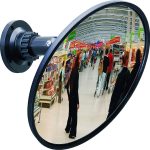Unlock Your Visionary Potential With The Revolutionary Mirror And Prism System: Experience An Optical Revolution!
Mirror and Prism System: Revolutionizing Optical Technology
Introduction
Dear Readers,
1 Picture Gallery: Unlock Your Visionary Potential With The Revolutionary Mirror And Prism System: Experience An Optical Revolution!

Welcome to our article on the fascinating world of mirror and prism systems. In this piece, we will explore the intricacies of this optical technology and its various applications. So, sit back, relax, and allow us to take you on an enlightening journey into the realm of mirror and prism systems.

Image Source: edmundoptics.eu
Nowadays, mirror and prism systems have become an integral part of various industries, including astronomy, photography, and telecommunications. These systems play a crucial role in redirecting and manipulating light, thereby enabling the creation of stunning images and facilitating efficient communication.
In this article, we will provide a comprehensive overview of mirror and prism systems, delve into their applications, discuss their advantages and disadvantages, and answer some frequently asked questions. So, without further ado, let’s dive into the world of mirror and prism systems.
🔍
Overview of Mirror and Prism Systems
Mirror and prism systems are optical devices that manipulate light to redirect its path or alter its properties. They consist of precisely shaped and polished mirrors and prisms that interact with light to achieve the desired optical effects. These devices are widely used in various fields to enhance imaging, communication, and measurement processes.
🔍
What is a Mirror and Prism System?
A mirror and prism system is a combination of mirrors and prisms arranged in a specific configuration to achieve a particular optical function. Mirrors are highly reflective surfaces that bounce light off their surfaces, whereas prisms are transparent optical elements that refract and disperse light. When used together, mirrors and prisms can manipulate light in unique ways, enabling a wide range of applications.
🔍
Who Uses Mirror and Prism Systems?
Various professionals and industries utilize mirror and prism systems for their respective applications. Astronomers use them in telescopes to gather and focus light, enabling detailed observations of celestial bodies. Photographers employ mirror and prism systems in cameras to reflect light onto sensors and create high-quality images. Additionally, engineers and scientists rely on mirror and prism systems to analyze light properties and conduct precise measurements.
🔍
When and Where are Mirror and Prism Systems Used?
Mirror and prism systems have been used for centuries and continue to find applications in numerous fields. They are utilized in telescopes, microscopes, periscopes, and other optical instruments to manipulate light and improve imaging capabilities. Mirror and prism systems are also implemented in telecommunications systems, such as fiber optics, to transmit and receive data efficiently. Furthermore, these systems are integral to virtual reality devices, laser technology, and many other cutting-edge advancements.
🔍
Why are Mirror and Prism Systems Important?
Mirror and prism systems are essential because they enable the manipulation and redirection of light, which is a fundamental component of many technological processes. Without these systems, the imaging quality in telescopes and cameras would be significantly compromised, and the transmission of information through fiber optics would be less efficient. Mirror and prism systems enhance our ability to visualize the world around us and facilitate seamless communication.
🔍
How Do Mirror and Prism Systems Work?
The operation of mirror and prism systems relies on the principles of reflection and refraction. Mirrors reflect light at specific angles, allowing the redirection of light rays. Prisms refract light, causing it to change direction and separate into its constituent colors. By strategically positioning mirrors and prisms, desired optical effects can be achieved, such as image inversion, light amplification, and dispersion.
🔍
Advantages and Disadvantages of Mirror and Prism Systems
Advantages:
1. Enhanced imaging capabilities: Mirror and prism systems improve the quality and clarity of images captured in various optical instruments.
2. Efficient light redirection: These systems enable precise control over the path of light, facilitating targeted illumination and focused imaging.
3. Versatile applications: Mirror and prism systems find applications in astronomy, photography, telecommunications, and numerous other fields.
4. Compact and portable: Mirror and prism systems can be designed to be lightweight and portable, making them suitable for on-the-go applications.
5. Optical measurement and analysis: These systems allow for accurate measurement and analysis of light properties, aiding scientific research and industrial processes.
Disadvantages:
1. Cost: High-quality mirror and prism systems can be expensive due to the precision manufacturing and materials required.
2. Sensitivity to environmental conditions: Some mirror and prism systems are sensitive to temperature, humidity, and other environmental factors, which may affect their performance.
3. Limited wavelength range: Certain mirror and prism systems may have limitations in terms of the wavelength range they can effectively manipulate.
4. Fragility: Mirrors and prisms can be delicate and susceptible to damage if mishandled or subjected to excessive force.
5. Complex design and alignment: Constructing and aligning mirror and prism systems can be challenging, requiring expertise and specialized equipment.
🔍
Frequently Asked Questions about Mirror and Prism Systems
1. Can mirror and prism systems be used for laser beam steering?
Yes, mirror and prism systems can be employed to steer and manipulate laser beams, facilitating various applications in laser technology.
2. Are mirror and prism systems used in virtual reality devices?
Yes, mirror and prism systems play a crucial role in virtual reality devices, allowing for the creation of immersive and realistic visual experiences.
3. Do mirror and prism systems have any applications in medicine?
Absolutely, mirror and prism systems are utilized in medical imaging techniques, such as endoscopes and surgical microscopes, to enhance visualization during procedures.
4. Can mirror and prism systems be used to expand the field of view in cameras?
Yes, specialized mirror and prism systems can be employed to widen the field of view in cameras, enabling the capture of panoramic and wide-angle shots.
5. Are mirror and prism systems used in military applications?
Indeed, mirror and prism systems are extensively utilized in military optics, including periscopes, rangefinders, and night vision devices, to enhance situational awareness and target acquisition.
🔍
Conclusion
In conclusion, mirror and prism systems have revolutionized optical technology and opened up a multitude of possibilities in various industries. These systems enable precise control over light, enhancing imaging capabilities and facilitating efficient communication. While mirror and prism systems offer numerous advantages, they also come with certain limitations. Nonetheless, their versatile applications and contributions to scientific advancements make them invaluable tools in the modern world.
Dear Readers, we hope this article has provided you with valuable insights into mirror and prism systems. Whether you are an astronomy enthusiast, a photography aficionado, or simply curious about optical technology, we encourage you to explore the wonders of mirror and prism systems further. Embrace the world of light manipulation and discover the limitless potential these devices offer.
Thank you for joining us on this enlightening journey!
🔍
Final Remarks
Dear Readers,
We would like to emphasize that the information provided in this article serves as a general overview of mirror and prism systems. While we have strived to present accurate and up-to-date information, it is essential to further research specific applications and consult experts in the field for more detailed insights. The world of mirror and prism systems is vast and ever-evolving, offering endless opportunities for exploration and innovation.
Happy exploring!
This post topic: Mirror



